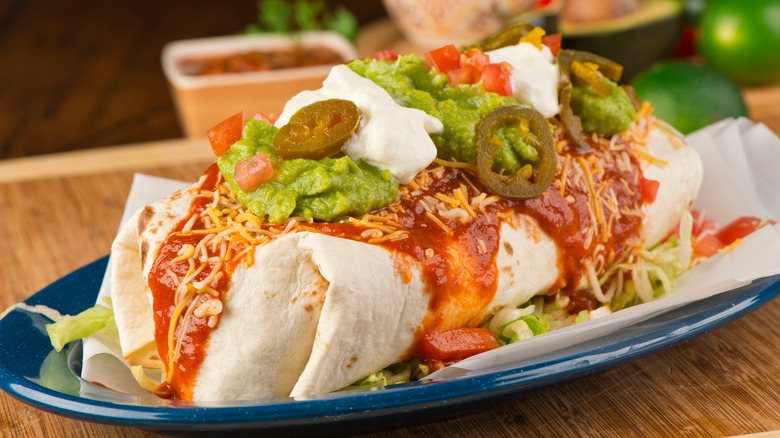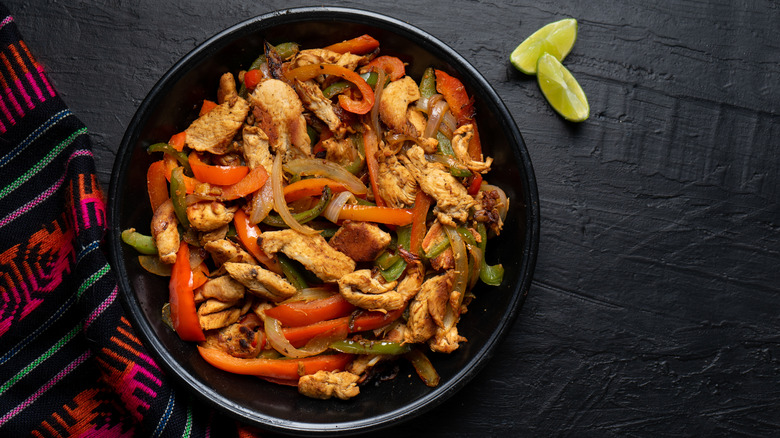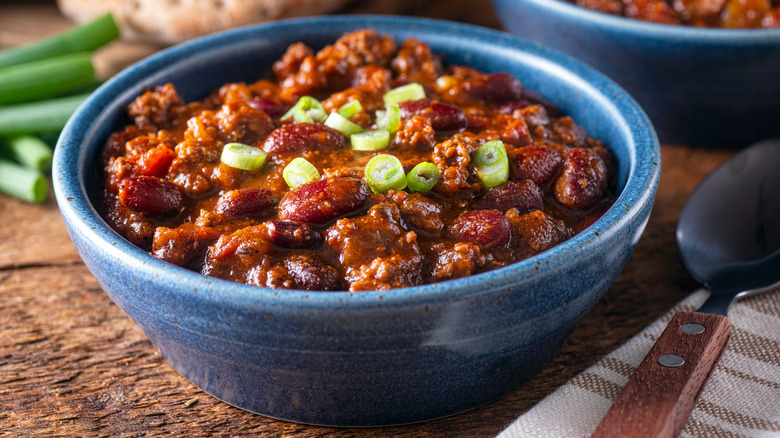What's The Difference Between Tex-Mex And Mexican Food?
Even if you aren't familiar with the word "Tex-Mex," you've likely had a dish from this American cuisine at some point in your life. If you've ever eaten cheese-covered nachos at the movies, ordered sizzling fajitas at Chili's, or chowed down on a couple of hard-shell tacos at Taco Bell, you've had Tex-Mex before.
In fact, many dishes that people consider "Mexican food" in the United States are actually Tex-Mex, according to History. Popular Tex-Mex restaurants (some of which you might have thought were Mexican) include Chipotle, Qdoba, El Pollo Loco, and Pappasito's Cantina, per USA Today.
This popular American regional cuisine shares many similarities with authentic Mexican food, so it's understandable that they would be confused. Both cuisines involve some type of tortilla. Plus, you'll find that many dishes in both cuisines include some type of meat and cheese. So then what's the difference between Tex-Mex and authentic Mexican food, and what's the history behind Tex-Mex as an American cuisine?
Ingredients are the biggest difference
The key difference between Tex-Mex and authentic Mexican food lies in the ingredients used for each. Cumin is one example. The use of cumin in Tex-Mex cuisine dates back to the 1890s in San Antonio when a German immigrant started selling chili powder that included the Indian herb, as History explains.
Thrillist also mentions some ingredients that you'll find in Tex-Mex that you won't find in traditional Mexican cuisine, including beef, black beans, yellow cheese, canned vegetables, and wheat flour. The site lists also some popular Tex-Mex dishes, which include the aforementioned nachos and fajitas, as well as chili con carne and enchiladas.
Shedding light on the other end of the spectrum, Saul Montiel, the executive chef at Cantina Rooftop in New York City, lists some of the ingredients and dishes that are commonly prepared in authentic Mexican cuisine (via Facebook/NowThis Food). These include tostadas, flautas, tamales, dried chili, corn tortillas, herbs, papalo, romero, and tacos de cabeza.
The next question to consider is, why did Tex-Mex cuisine start using ingredients that differed from south-of-the-border cuisine in the first place?
The history of Tex-Mex and its ingredients
According to NowThis Food, Chef Montiel describes Tex-Mex as a mixture of Native American, Spanish, American, and Mexican cuisines. History claims it originated in San Antonio, Texas in the 1880s, and was adapted from Tejano home cooking. The first Tex-Mex dish? A bowl of chili con carne, made by a group of women called "the chili queens." This eventually led to other dishes that used less expensive ingredients with inspiration from Mexican cuisine, including nachos in the 1940s, followed later by enchiladas and fajitas.
By the 1960s, Tex-Mex cuisine was served in various parts of the United States, but it wasn't widely known as "Tex-Mex" just yet; the term didn't become popular until the 1970s after Diana Kennedy wrote a book called "The Cuisines of Mexico," as Thrillist explains. In her book, she categorized Tex-Mex as an American cuisine with flavors that differed from food south of the border (via History), including the heavy use of cumin.
Ingredients are what divide Tex-Mex from authentic Mexican cuisine, and Tex-Mex is now widely accepted as its own, distinct cuisine. But despite the differences, both cuisines are enjoyed by people all over the U.S.


